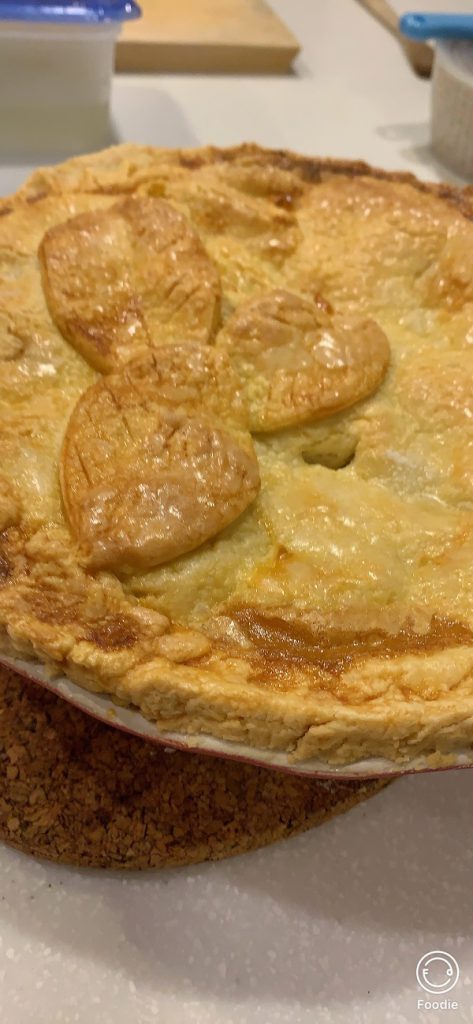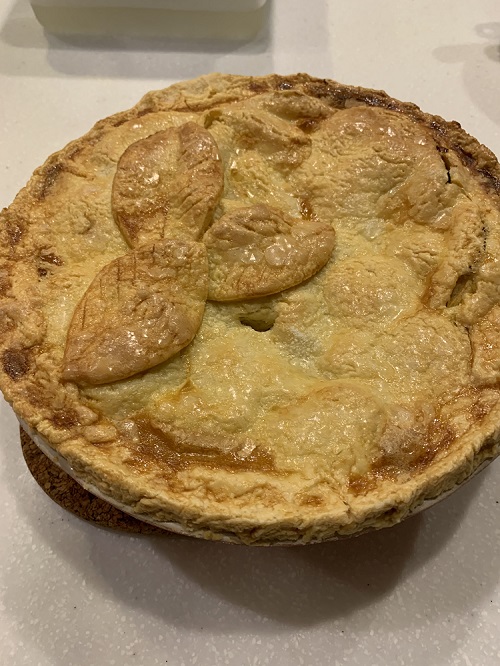Dear Newsletter readers (old and new),
Welcome to another edition of our weekly newsletter and I hope it finds you happy, healthy and in good spirits as we head towards the weekend.
The topic this week is baking, which I love to do when I get the chance, I can generally turn my hand to making anything from cakes to pies to scones and as my efforts are usually eaten pretty quickly I think it’s fair to say that I can hold my own when it comes to baking. I don’t eat a lot of sweet pastries or cakes these days, but when I was a kid it was a bit of a different story, but then my mum was a traditional Yorkshire housewife that loved to bake and she. When you’ve spent your formative years with a mum that’s baking up to 3 to 4 times a week and sometimes more than that you either get tired of eating cakes and pies or you simply don’t; in my case, I looked forward to eating everything that my mum mixed in a bowl and put in and took out of the oven.
For those of you that grew up inside a similar household to me then you’ll know how hard it is to resist the temptation of eating freshly baked cakes and pastries. From slicing in to a freshly baked Victoria sponge or Madeira cake, hastily removing a bun (American call buns cupcakes) from its case; breaking into a warm Victoria scone, cutting and easing a big piece of room temperature Bramley apple pie from its place of creation, as well as doing the same to many other types of cakes and pastries, I loved the lot. Fortunately, I was the active sporty type, so I never seemed to put on weight, no matter how much of my mum’s baking I ate; these days, as a 58 years old, of course it’s a different story, I’ve only got to look at a piece of cake or pie and I put weight on.
I really do have to count myself very lucky indeed having had a mum that was an avid and good baker because most of my mate’s mothers bought in cakes and pastries from local bakeries and the supermarket, but my mum never did. On many occasions when my mates would come round to my home, my mum would always offer them something that she’s baked with a cup of tea and I cannot remember one mate that ever refused; they may have refused the tea, but definitely not the scone, piece of cake or pie or whatever else she offered them. My mum had a very light hand, so her cakes were always light and fluffy which made them a favourite amongst my mates.
If there is one bit of pastry that I can still eat and eat with great enjoyment it’s apple pie, ideally an apple pie that’s been made with Bramley apples. Buying Bramley apples in the UK is easy enough, but out here in Japan, although you can buy them at certain times of the year, it’s a bit more involved. There are only 1/2 apple growers in Japan that grow Bramley apples; apparently some years ago a Japanese apple grower or fruit farmer from Nagano (Nagano is in the northern central part of Japan) did some research on apples and found that Bramley apples had a unique taste which he thought would appeal to the Japanese market place. In Japan there is not as much apple pie baking going on as there is in the UK; here Bramley apples tend to be used to make puree (apple sauce) rather than pies because they don’t have the same tradition of baking cakes and pies as we do in the UK.

I actually placed an order for my Japanese grown Bramleys back in April of this year and I took delivery of 10 kgs of them only a week ago. Already, I have made an apple crumble and an apple pie (see a couple of pictures of my apple pie attached) and with the rest of my apples I intend to make a further apple pie and stew and puree the rest of the apples to store in the freezer ready to use when I’m craving my Bramley apple fix. When I make apple pies I generally stew the apples first with some water, lemon juice, a drop of dry white wine and enough sugar to create a sweet but tart taste, my family tends to prefer apple pies made this way; however, with the Japanese Bramley I opted for the uncooked approach, at least for the first pie.
I have a big pie dish which will accept about 1kg of uncooked apples, so after peeling, coring and slicing my Bramleys I placed them in a bowl with some lemon juice to stop them going brown and popped them in the refrigerator until I had made my pastry. I always make short crust pastry, never puff pastry, for me a proper apple pie is one made with short crust pastry, there’s no other substitute; I’m sure there are those out there that will disagree with me, which is fair enough: at the end of the day it’s each to their own.

After making the pastry and cooling it down in the refrigerator for an hour or so it is ready to be rolled out and made into a pie. I usually take a fork and prick the pastry at the bottom of the dish and around the sides which I find helps it cook through better and then I add in my apples alternating with adding sugar in between each layer of apples until all the apples are positioned in the dish. I then roll out the top of the pie and making sure I have wet the edges of the pastry base I then marry the top to the base and seal the edges by pinching the pastry together with my forefinger and thumb. I finish with brushing the top with an egg, milk and water wash and I then sprinkle the top fairly liberally with brown sugar. I then pop the pie into a pre heated fan oven set to 200c (220c non fan oven) for 10 minutes, I then lower the heat down to 160c (180c non fan oven) and cook for a further 45 to 50 minutes. After all that you should have a pie that looks similar, if not identical to the one in the pictures attached.
If anybody reading this article would like to know where Bramley apples can be purchased from then please let me know and I will provide you with the details. Also, if you’ve never made an apple pie and you would like some advice on how to make one then please let me know and I will willingly pass on whatever advice I can to help you out. Until next week, keep safe and enjoy your respective weekends.